Apple's 2010 MacBook Air (11 & 13 inch) Thoroughly Reviewed
by Anand Lal Shimpi on October 26, 2010 10:08 PM EST- Posted in
- Mac
- Apple
- MacBook Air
- Laptops
I remember falling in love with the original MacBook Air. It wasn’t the styling that won me over, but rather the combination of performance, form factor and battery life. I needed a notebook fast enough for me to get work done when necessary, but with long enough battery life to last me through a trip across the country. Back in 2008, the MacBook Air was the perfect solution to that problem.
The original MacBook Air had three main issues. It was hot, the 1.8” HDD was unbearably slow, and it shipped with 2GB of memory that you couldn’t expand to 4GB. It was a great machine for writers as you could open up TextEdit and hammer out a document for five hours straight. And when you needed to, you had the greater-than-Atom performance to get more intensive work done.
What prompted me to stop using the MacBook Air was the second generation unibody MacBook Pro. Apple ramped up battery capacity enough where I could get much better battery life and performance out of the MacBook Pro. The combination of the two was enough for me to let my MacBook Air collect dust. I hardly ever used it after that point.
Apple updated the MacBook Air hardware since its original release, but the updates were nothing spectacular. Apple moved from an Intel supplied chipset to one made by NVIDIA, and SSDs eventually became standard issue. Battery life didn’t get any better and memory sizes never moved beyond 2GB.
Last week Apple announced the biggest upgrade to the MacBook Air since 2008, complete with a redesign, price reduction and improved internals. Let’s start at the redesign.
There Once Was One, Now There's Two
The original MacBook Air was very light on connectivity. It had an angled MagSafe power connector but that was it for visible ports. The right side of the machine was home to three hidden connectors: mini DisplayPort, USB and line out.

The new MacBook Air (left) vs. the old MacBook Air (right)
The new design forgoes the rounded nature of its predecessor and introduces more angular surfaces toward the rear of the machine. Connectors like flat surfaces so Apple outfitted the new MacBook Air with a pair of USB ports (one on each side) in addition to the MagSafe connector, miniDP out and line out. Everything is fully accessible from the start, nothing is hidden behind any secret panels.
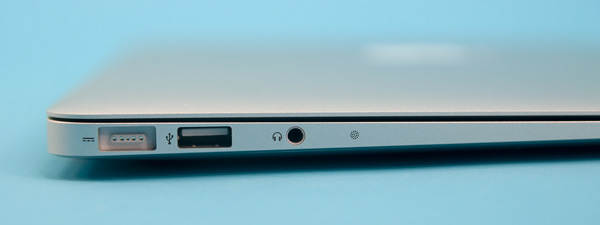
From left to right: MagSafe Power Connector, USB 2.0 port, headset jack, microphone
Next to the headset jack on the left side is the integrated microphone. Apple states it is an omnidirectional mic, but its placement is curious given the original MacBook Air had its mic at the top of the screen bezel. The microphone’s left leaning location didn’t negatively impact audio performance in our tests. As long as you’re not sitting to the right of a horribly noisy person/animal/box you should be good to go.
There are of course now two MacBook Airs that make up the family: an 11.6-inch model and a 13.3-inch model. The two have identical port layouts however the 13-inch MacBook Air gets an integrated SD card reader like its Pro siblings.
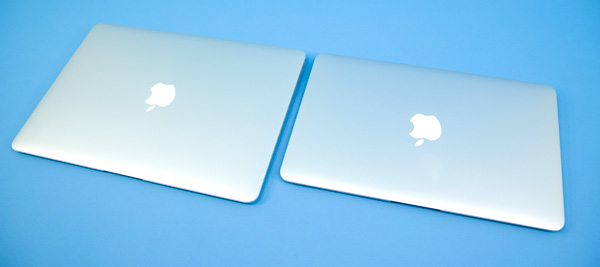
13-inch MBA (left), 11-inch MBA (right)
There’s a 0.6 pound difference between the two models and associated difference in dimensions:
| MacBook Air Size Comparison | ||||
| 11-inch | 13-inch | |||
| Height | 0.11 - 0.68" (0.3 - 1.7 cm) | 0.11 - 0.68" (0.3 - 1.7 cm) | ||
| Width | 11.8" (29.95 cm) | 12.8" (32.5 cm) | ||
| Depth | 7.56" (19.2 cm) | 8.94" (22.7 cm) | ||
| Weight | 2.3 lbs (1.06 kg) | 2.9 lbs (1.32 kg) | ||
Prices and specs differ as well. The 11-inch starts at $999 while the 13-inch starts at $1299. You can get faster CPUs in the 13-inch, while GPUs and memory options remain the same across the line. SSDs are not only standard but they're the only option for storage on the Airs. Given my infatuation with SSDs, you won't see me complaining. I'll be happy when Apple ships all of its systems with SSDs in their default configurations.
| MacBook Air Spec Comparison | |||||
| 11-inch | 13-inch |
13-inch (Late 2008)
|
|||
| CPU | Intel Core 2 Duo 1.4GHz (1.6GHz optional) | Intel Core 2 Duo 1.86GHz (2.13GHz optional) | Intel Core 2 Duo 1.86GHz | ||
| Memory | 2GB DDR3-1066 soldered on-board (4GB optional) | 2GB DDR3-1066 soldered on-board (4GB optional) | 2GB DDR3-1066 soldered on-board | ||
| GPU | NVIDIA GeForce 320M | NVIDIA GeForce 320M | NVIDIA GeForce 9400M | ||
| Storage | 64GB SSD (128GB optional) | 128GB SSD (256GB optional) | 128GB SSD | ||
| Connectivity | 802.11a/b/g/n Bluetooth 2.1 + EDR | 802.11a/b/g/n Bluetooth 2.1 + EDR | 802.11a/b/g and draft-n Bluetooth 2.1 + EDR | ||
| Battery Capacity | 35 Whr | 50 Whr | 37 Whr | ||
| Dimensions |
11.8 " x 7.56 " x 0.11 - 0.68" (29.95 cm x 19.2 cm x 0.3 - 1.7 cm) |
12.8 " x 8.94 " x 0.11 - 0.68" (32.5 cm x 22.7 cm x 0.3 - 1.7 cm) |
12.8 " x 8.94 " x 0.16 - 0.76" (32.5 cm x 22.7 cm x 0.41 - 1.9 cm) |
||
| Weight | 2.3 lbs (1.06 kg) | 2.9 lbs (1.32 kg) | 3.0 lbs (1.36 kg) | ||
| Price | $999 | $1299 | $1799 | ||
Memory & CPU Upgrades: Good News and Bad News
I always like hearing the bad news first so I’ll treat you all no differently. The new MacBook Air not only comes with a meager 2GB of memory, but it’s also soldered onto the motherboard just like in the previous generations.
Now the good news: after two years of complaining Apple has finally added a 4GB memory option. It’s not end user upgradeable, but for an extra $100 Apple will solder 4GB of memory onto the MacBook Air’s motherboard instead of 2GB.
If you’re really just going to be using this thing for writing, IMing and browsing the web - 2GB is fine. If you plan on doing more than that, you should consider spending the $100 on the 4GB upgrade. Right now I’m using 1.46GB of memory. I can edit only a handful of photos in Photoshop before I start swapping to disk.
Apple priced CPU upgrades similarly, but there’s a catch. The base $999 and $1299 (11/13-inch) MacBook Airs can’t be the recipient of an upgraded CPU. You have to go to the upgraded 11/13-inch configurations, which are both $200 more expensive before you get the option to upgrade the CPU for another $100. The upgraded models just give you larger SSDs and nothing else, so if you don’t need the space then the seemingly affordable $100 CPU upgrade actually ends up being a $300 upgrade.
If you want my advice I’d stick to the base systems so long as your needs are simple. However if you plan on doing any amount of multitasking or heavy work (e.g. content creation, editing) on this machine I’d recommend at least the $100 memory upgrade to 4GB. And if you plan on keeping the MacBook Air for a while, spring for the upgraded CPU. It’ll make the later years of its life a little more bearable.
The Trackpad
Going back to my old MacBook Air was always weird. It lacked the glass trackpad that I’d grown accustomed to. The trackpad just felt rough. The new Airs move to the same type of glass trackpad as the rest of Apple’s mobile lineup. Also gone is the traditional mouse button, the glass trackpad pivots at the top so the entire surface acts as a mouse button.
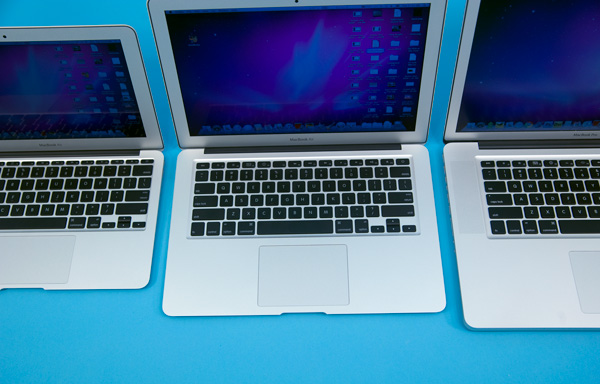
From left to right: 11-inch MBA, 13-inch MBA, 15-inch MBP
Multitouch gestures are supported by the glass trackpad.
No Optical Drive, OS X Recovery via USB Stick
The original MacBook Air didn’t have an optical drive. The new models are no different. When I bought my first Air I actually purchased the external SuperDrive, thinking I’d use it. To be honest, I’ve only used it when doing weird things to the MacBook Air for reviews on AnandTech. I won’t go as far as to say that no notebooks need optical drives, but the absence of one in the MacBook Air isn’t that big of a deal.
Unlike the original MacBook Air, Apple doesn’t bundle these two puppies with recovery DVDs. In case you get an 8GB USB stick with OS X and all bundled apps on the drive. If you need to restore your machine, pop the USB stick in and hold down the ‘c’ key while you start the Air. Apple was even kind enough to etch the version of the OS and application suite on the USB stick itself in case you accumulate a bunch of these over time.
I must say this is the ideal way to distribute OS X recovery software. The USB stick isn’t write protected so you could always do something silly like erase it, but I’m willing to take that risk for the convenience benefit. I expect that next year’s MacBook releases may bundle a similar stick if Apple is feeling particularly forward looking.
No Backlit Keyboard, No Ambient Light Sensor, Same Old Power Brick
Neither of the new MacBook Airs have a backlit keyboard. I do a lot of writing in bed at night and I do miss the backlit keyboard. For touch typists it’s not a problem, but if you switch between the MacBook Air and other computers regularly you’ll find yourself fumbling for the function keys in the dark. I'm guessing this was a cost savings measure.
The top of the screen bezel only has a cutout for the VGA camera, there’s no ambient light sensor. That means you don’t get auto adjusting screen brightness (which some may consider a good thing).
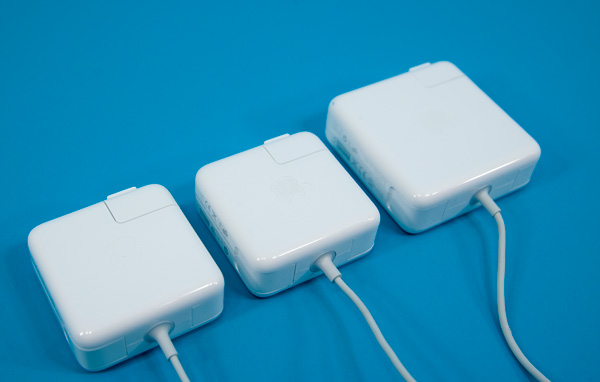
From left to right: new MBA power adapter, old 2008 MBA power adapter, 2010 MBP power adapter
Both Airs come with the same 45W MagSafe power adapter, which just happens to be the same power adapter as the old 2008 MBA (with a new connector of course):
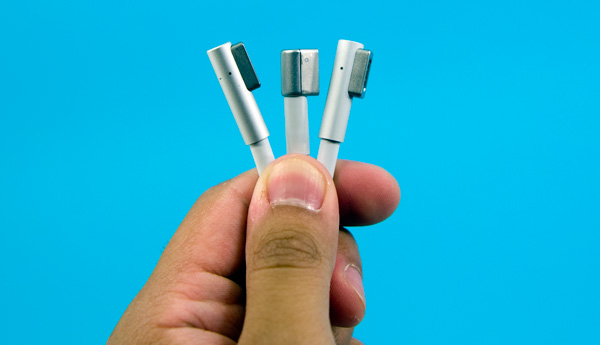
From left to right: 15-inch MBP power connector, 2008 MBA power connector, 2010 MBA power connector
No Flash Installed by Default
So this is weird. The new MacBook Airs are the first Macs to ship in a long time without Adobe's Flash Player plugin installed by default. That's right, if you open your brand new Mac, launch Safari, visit youtube.com and try to watch a video you'll get this screen:

Apple encourages its users to go download the latest version of Adobe's Flash Player to enable the functionality, but this flies in the face of Apple's "it just works" usage model. Watching flash video no longer just works on Macs. You have to go out and download something to make it work. It sounds awfully PC like (gasp!).
Obviously Apple isn't the biggest fan of Flash. The technology isn't supported (and most likely never will be) on iOS. Removing it from the default OS X install makes Apple's intentions clear: it wants Flash dead.
There's also the security aspect. Apple wants to keep its OS as secure as possible and Flash vulnerabilities have been a problem in the past. By not shipping OS X with Flash on it, Apple avoids shipping an old, out of date and potentially vulnerable version of the player software on its Macs. And by forcing users to download the latest version they'll hopefully have a more secure copy on their Macs.
Now whether or not this next bit is a coincidence I'm unsure of. Two of our battery life tests involve loading web pages with Flash on them. My 13-inch MBA sample would throw this error almost every 60 minutes on the dot during the test:

The issue didn't happen on the 11-inch MBA, nor on any of the other MBPs I've run the battery tests on. I've looked around and can't seem to find other reports of Flash being unusually unstable on the new MBAs so it's quite possible that this is an isolated (but unusually repeatable) problem. I've alerted Apple and I'm trying to see if they can reproduce it on any other hardware aside from my 13-inch model. What bothers me is that the the error is very reproducible. I'm going to keep pounding on the system to see if I can figure out what's going on. If I find anything, rest assured I'll publish it here.


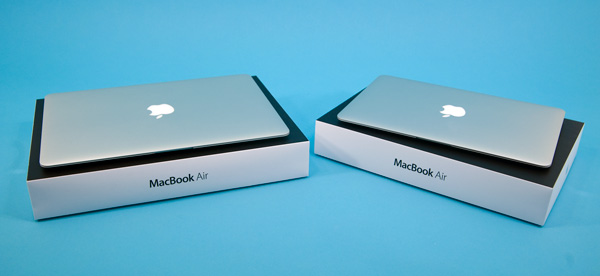
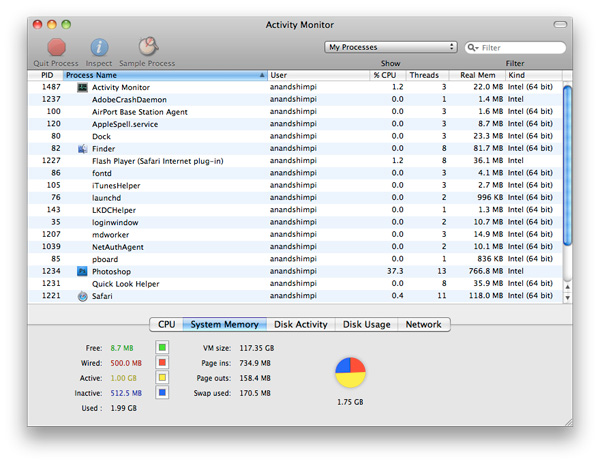
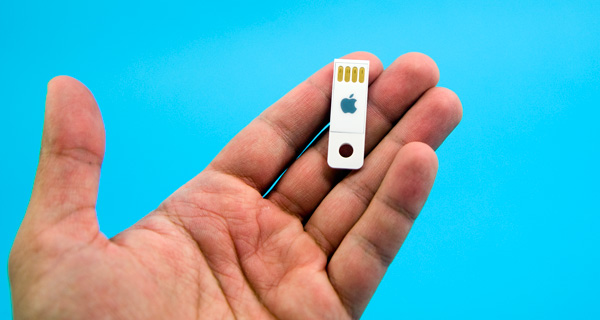
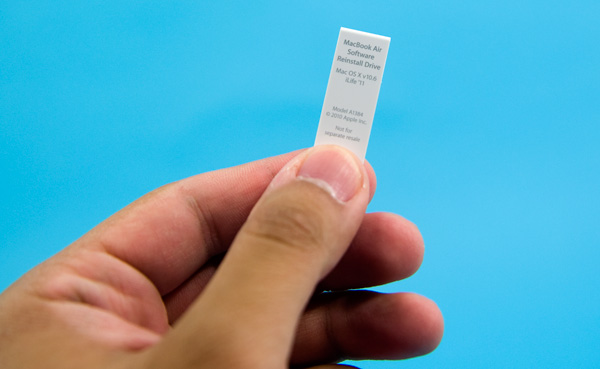
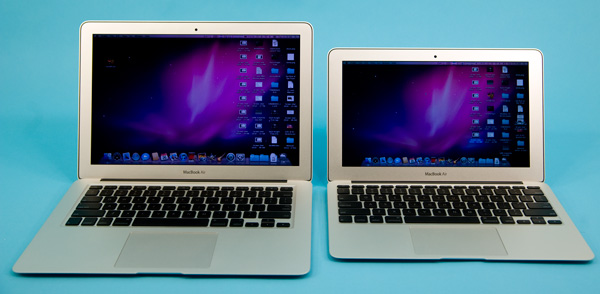








185 Comments
View All Comments
khimera2000 - Wednesday, October 27, 2010 - link
but on the flip side many of those larger notebooks make up for graphic loss with a stronger processer, which these will not be able to compete with, not to mention that although it is using a NV320, it is not the discreet model it is the intergrated model which saps your ram just like a netbook not to mention that you can play movies on a netbook. the point of a hard drive is rather mute since you yourself acknowledge that solid state drives exist on netbooks.to assume that netbooks will stay as slow as there oridional releas is kinda off, since technolagy moves at a fast rate. comparing this system to new systems that are released by other companies there is no where that it fits other than as a netbook since your going for the bottom of the barrel for Nvidia cards, and going for a CPU that can be smacked by a I3 mobile theres nothing coming out slower for PC then this unless you look at netbooks.
with this in mind it still just looks like a netbook performance revision.
appliance5000 - Friday, October 29, 2010 - link
So somewhere in this verbiage you're saying it a really really fast and powerful netbook. Ok - if it makes you happy -OK.Demoure - Wednesday, October 27, 2010 - link
Why must it be under 3 pounds? I can't think of a good reason for requiring a laptop under 3 pounds, other than that you are intentionally being picky so as to show it in a better light. At four and a half pounds you have the m11x, a far superior laptop. It is not thin or light, but it is not thick and heavy. Being a scrawny person myself, I cannot think of a person where the 1.5 extra pounds would be a deal breaker.And I do agree with you, it is not a netbook, unlike what the other replier said. It is powerful enough to do what netbooks cannot. As I describe netbooks, they fall short if you try to do anything other than text-based stuff. Ion blurs the lines a little, I've owned an ion laptop before. It was able to play movies flawlessly, but beyond that it was still limited in a netbook way. However, my m11x, and as the performance of the air is not too far off, are quite competent at a variety of things. Just about the only thing I would use my desktop for, but not my m11x, would be the heavy work of encoding, transcoding, that sort of stuff. For everything else, it really does feel like a full fledged laptop, if not a decent desktop. The processor being the limiting factor of the laptop, it is fast enough for everything reasonable.
tno - Wednesday, December 29, 2010 - link
This might sound slight to you but is reasonably significant to me. I'm a paramedic with a transport service based out of a tertiary care center (large hospital). This is very much a transient job, you are either in an ambulance going from one place to the next or in a helicopter doing the same. I like to keep some essentials with me at all times: food, water, phone charger, phone, reading material, lightweight computing option. Now phone goes in a pocket. Water has its own bottle. The rest has to go in my bag.After making do with a bulky laptop bag I decided I needed something slimmer and more useful. So I now have a 20L day pack from North Face. It has a laptop compartment/hydration bladder sleeve, and two water resistant compartments, as well as a few smaller pockets and a rain cover for real wet work. And it ways about 1/4 pound. It's amazing, especially compared to my old two pound bag that was bulky while not actually carrying much more stuff.
Food (two Power bars, a PBJ, an apple and some dried fruit/nuts) is about 1 1/2 lbs. Reading material is about 1/2 lbs. Phone charger's a few ounces. So that's about 2 1/2 lbs, including the bag. A 4 1/2 lbs laptop would bring me up to seven pounds. My Lenovo S10 with a 9 cell battery weighs about 3 lbs and having put both used that and my old Dell 15" lappy (about 4.5 lbs) I was much happier with the S10. One handed transitions from one place to another without having to close the laptop is one maneuver that definitely favors the S10 and one I do a lot.
As much as I'm bumping up all these Mac posts I'm going to start to sound like quite the fan boy. That said I still don't own one. And am having trouble making up my mind on which one to buy. The 13MBA and 13MBP vary by just enough to make the MBP's performance equally as tempting as the MBA's lightness. What a travesty of options.
omega12 - Wednesday, October 27, 2010 - link
Did you just compare the power consumption of an unplugged laptop vs a plugged in laptop? The photo on the left says 0W DC Input and on the right we have 22.97W DC Input. What's up with that?Anand Lal Shimpi - Wednesday, October 27, 2010 - link
Cropped the wrong screenshot, the actual processor power consumption doesn't change when plugged in vs. not in OS X but I ran the test both ways just to be sure.Fixed :)
Take care,
Anand
QChronoD - Wednesday, October 27, 2010 - link
Did you guys test the battery life for the air while running windows? Did I miss it on the charts?I need to replace my old laptop w/ something small so I can carry it all day at school. I don't need lots of power, but most of the software I need to use in lab don't run on OSX (AFAIK).
Anyone know anything else for about $1K that is as thin and light and runs for 4+ hours??
JMS3072 - Wednesday, October 27, 2010 - link
Try the ThinkPad X201.kavanoz - Wednesday, October 27, 2010 - link
You can also check Acer Aspire TimelineX AS1830T-3721. Just make sure to swap out the HDD with a SDD. I put a 40 GB Intel X25-V when I bought it and it just flies. Nowadays a 64 GB Sandforce based SSD makes more sense. You can find them for as low as $120.Demoure - Wednesday, October 27, 2010 - link
Compare it to a netbook and you will be delighted at how speedy and thin it is. Compare it to the ipad and well.. okay so the ipad is a bit silly no matter the comparison. Compare it to asus's UL series, and there you have a decent comparison. Thats one where it could really go either way, based on personal preference and which camp you side with. But when the new air launched, I wondered why a reasonable person would want it over an m11x. It is thinner, certainly.. but, is that really important? No laptop these days is really the thickness of a brick, to judge size, you would think people would be more concerned about length and width. Screen size. How thin the air is.. seems like it would never factor in to any situation. Places where an air can fit, a culv-type laptop would as well. If not for it being thin, I really can't think of a reason to get it over the m11x. Neither are really BAD buys, but the air just seems less impressive in comparison. With the money saved by getting the old r1 (you know, the one with more battery life, cheaper, just as useful, only lacking in its lack of optimus) you could get yourself a fancy ssd, to complete the package. Perhaps I am just baised after finding the m11x to be the perfect little laptop, but despite it being a hideous looking thing, I see no reason to get the air unless you just have to have an apple computer. However if the m11x did not exist, I would not blame anyone for getting an air. It is well rounded.